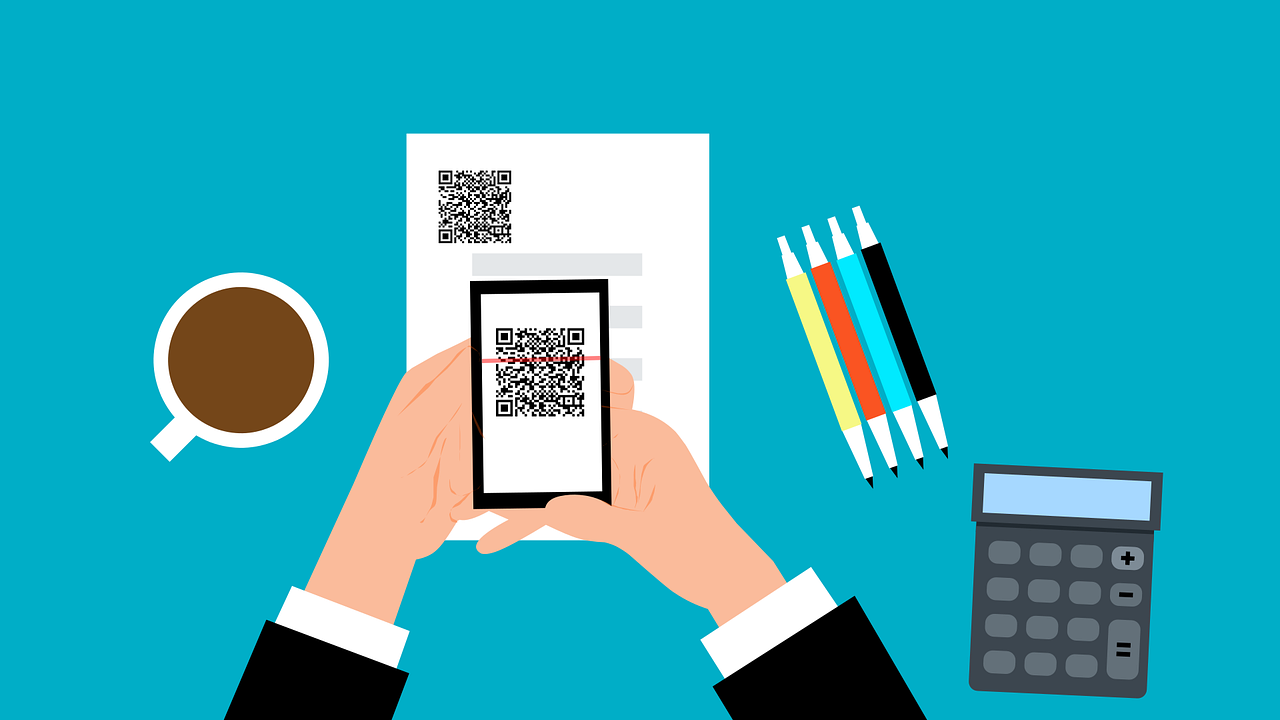If you’ve ever wondered about those pixelated squares popping up everywhere, we’ve got you covered. QR codes, or quick response codes, are more than just a jumble of pixels. Let’s dive into the world of QR codes and unveil the mysteries behind these nifty little patterns.

A Quick Overview
QR codes originated as a tool to track vehicle parts in manufacturing, but they’ve evolved into something much bigger. Nowadays, these pixelated wonders are saving us from the hassle of typing lengthy URLs into our browsers. Imagine no more fumbling with tiny keyboards to access a website – just scan and go!
The Rise of Contactless Interaction
Especially during the pandemic, the codes have become the unsung heroes of contactless interaction. No more physical menus at restaurants; just scan the code on your table, and voila – the menu appears on your screen. It’s like magic, but with fewer germs involved.
QR Codes in Numbers
According to a 2020 survey, a whopping 72% of users in the U.S. and Europe have scanned a QR code recently. Interestingly, 54% noticed an uptick in QR code usage since the pandemic hit. Despite 48% acknowledging security risks, people are still scanning away.
The Origin of QR Codes
Who Invented the QR Code?
Meet Masahiro Hara, the brain behind QR codes. In 1994, working for Denso Wave, he invented these codes to track automobiles more efficiently during manufacturing. Inspired by the “Go Board” game, Hara and his team never anticipated they would transcend the automotive industry.
How Do QR Codes Work?
Decoding the Mechanics
QR codes operate like supermarket barcodes, storing information in a grid of pixels. When scanned, they open links, add contacts, send messages, or even make calls – all in a matter of seconds.
Anatomy of a QR Code
- Quiet Zone: Surrounds the QR code, aiding scanning device recognition.
- Finder Patterns: Three square markers in corners for orientation.
- Alignment Pattern: Compensates for image distortions.
- Timing Pattern: Interconnecting lines to determine data matrix size.
- Version Information: Specifies QR code version.
- Data Cells: Main part encoding black and white modules.
Input Modes
QR codes encode text in four modes: numeric, alphanumeric, byte, and Kanji. Each mode optimizes bit strings for different data types.
Static vs. Dynamic
Choose Your Code Wisely
Static codes have fixed destinations, suitable for one-off uses. Dynamic codes, on the other hand, allow destination changes, perfect for evolving information.
Common Types of QR Codes
Beyond the Basics
- URL QR: Turns a website into a QR code.
- vCard QR: Dynamic code for business cards or resumes.
- File: Converts files (PDF, PNG, JPEG, MP4) into QR codes.
- Social Media: Static or dynamic codes for social media profiles.
- H5 Editor: Dynamic codes presenting web page-like information.
- Wi-Fi: Static codes for instant Wi-Fi connection.
- App Store: Dynamic codes leading to app downloads.
- Multi-URL : Dynamic codes displaying varied content based on factors.
- MP3: Dynamic codes for promoting music or podcasts.
- Email: Dynamic codes for instant email setup.
- Text: Static codes displaying simple text.
How to Scan and Generate QR Codes
Simplicity at Its Best
Scanning a QR code is a breeze – just use your phone’s camera. Generating one? Options include QR code generators or the Chrome mobile app.
QR Codes in Daily Life
Beyond Convenience
QR codes have infiltrated every aspect of our lives:
- Travel: Speedy hotel check-ins and tourist information.
- Payments: Easy transactions without digging for cash.
- Marketing: Tutorials, how-to videos, and campaign metrics tracking.
- Social Media: Simplifying the path to more followers.
Privacy Concerns and Security Risks
Peeling Back the Layers
Scanning a QR code might reveal more than you think. From basic information like time and location to potential email and phone number exposure, it’s essential to be cautious.
The Dark Side: Risks and Security Measures
Beware of malicious QR codes leading to hacked sites or phishing schemes. Stay protected by following these tips:
- Choose Safe Apps: Stick to your phone’s built-in camera for scanning.
- Keep Devices Updated: Ensure your devices have the latest security updates.
- Stay Prudent: If it sounds too good to be true, it probably is.
FAQ
Can I generate a QR code for free?
Yes, you can use the Chrome mobile app or various online QR code generators. Just be cautious with free generators, as some may start charging after a certain number of scans.
Do I need a separate app to scan QR codes?
Not anymore! Most phones have built-in QR code readers in their camera apps. Simply open the camera, point it at the QR code, and follow the instructions.
Are QR codes secure?
While convenient, they pose security risks, especially if they lead to malicious sites. Be cautious and use your phone’s built-in camera for scanning to minimize risks.
How can I protect myself when using QR codes?
Follow these tips:
- Use secure apps for scanning.
- Keep your devices updated.
- Stay vigilant and avoid suspicious codes.
How do I generate a QR code for a webpage using Chrome’s mobile app?
Open Chrome, tap the three-dot icon > Share > QR Code > Download.
Proxy.Pac generator
Proxy.Pac generators help configure proxy settings in web browsers automatically. They use a JavaScript file (Proxy.Pac) to define how browsers connect to the internet based on specific conditions. To generate Proxy.Pac files, you can use tools like ForestVPN to ensure secure and private browsing experiences. ForestVPN not only aids in creating Proxy.Pac files but also enhances online privacy and security. Explore ForestVPN today for a seamless and protected internet experience.

